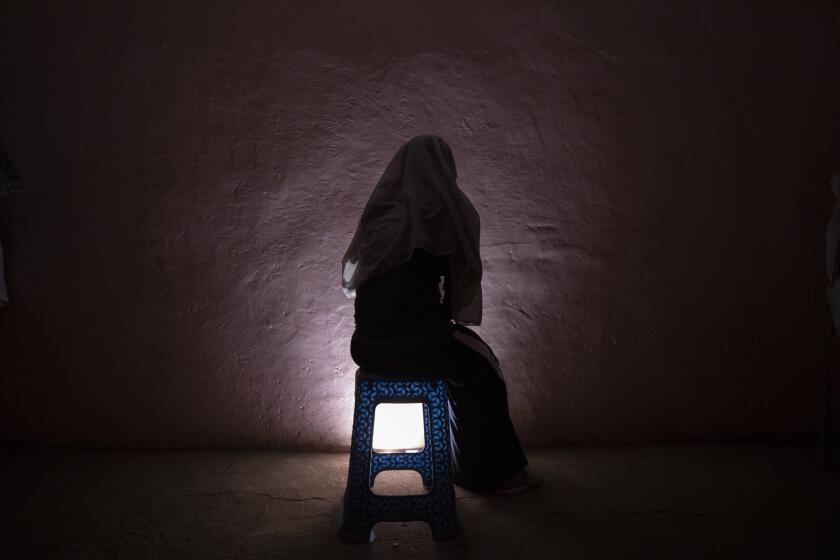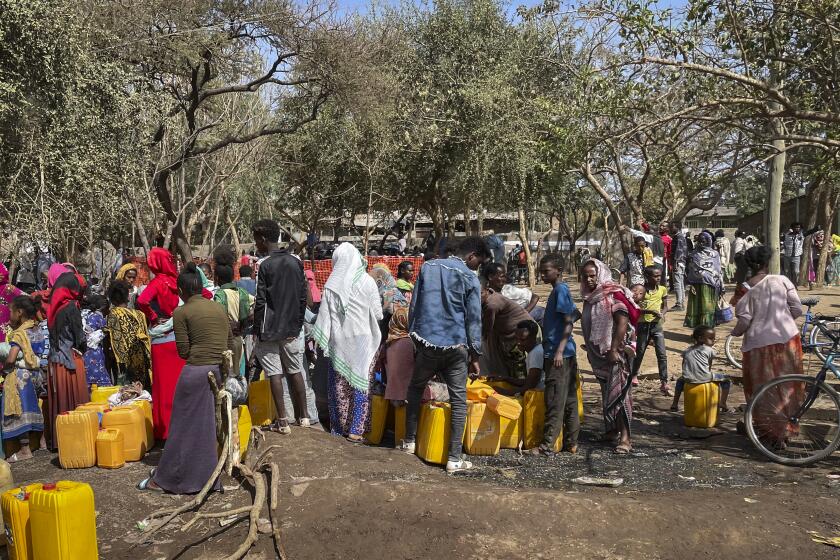Researchers verify 1,329 hunger deaths in Ethiopia’s Tigray region since cease-fire

- Share via
NAIROBI — Researchers say they have verified 1,329 deaths from hunger in Ethiopia’s northern Tigray region since a cease-fire ended a two-year conflict there in November.
A study by local health authorities and Mekele University in the regional capital found that hunger is now the main cause of death in Tigray, accounting for more than 68% of deaths investigated by the researchers.
The study is based on a household census conducted by health workers from Aug. 15-29 in nine subdistricts of Tigray and 53 camps for internally displaced people.
Tigray has 88 subdistricts and 643 displacement camps, so the number of hunger deaths across the region is almost certainly far higher.
One factor is the suspension of food aid by the United States and United Nations after the discovery in March of a huge scheme to steal humanitarian grain in Tigray. The pause was extended to the rest of Ethiopia in June after the theft was found to be nationwide.
Ethiopia’s government wants the suspension ended. The U.S. government and the U.N. want the government to give up its control of the food aid delivery system.
U.N.-backed human rights experts say that war crimes continue in Ethiopia despite a peace deal signed nearly a year ago to end a devastating conflict.
The number of deaths from all causes recorded by the researchers in the areas studied rose sharply after the aid suspension, almost doubling from 159 in March to 305 in July.
About 5.4 million of Tigray’s 6 million population relied on humanitarian aid. More than 20 million people in Ethiopia as a whole need food aid.
The study’s findings are described in a document seen by the Associated Press and prepared by the Tigray Emergency Coordination Center, a group of U.N. agencies, aid groups and regional government offices.
Hunger plagued Tigray throughout the conflict between Ethiopian and allied forces and Tigray fighters. For much of it, the federal government cut the region’s services and restricted aid access, prompting U.N. experts to accuse it of using hunger as a weapon.
Residents of the town of Bora, in northern Ethiopia’s Tigray region, tell of a horrific massacre of local men and boys by Ethiopian soldiers.
The government rejected allegations of weaponizing aid, blaming the Tigray fighters for the lack of access.
November’s cease-fire kindled hopes that aid would reach the region, but they were dashed by the discovery of the massive theft, with some U.S.-marked bags of grain being sold in local markets.
Tigray authorities found that 7,700 tons of grain had been stolen. Earlier this month, the region’s leader announced that 480 officials had been arrested in connection with the corruption.
Other parts of Ethiopia have yet to disclose the results of their own investigations. The U.S. and the U.N. World Food Program are also investigating.
More to Read
Sign up for Essential California
The most important California stories and recommendations in your inbox every morning.
You may occasionally receive promotional content from the Los Angeles Times.














